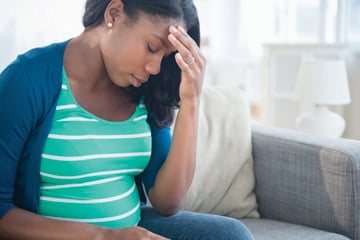Women have a lot on their plates, and sometimes important self-care can take a back seat to work, family and other obligations.
In fact, nearly 50% of adult women have high blood pressure, and nearly three-quarters of those with high blood pressure don’t have it under control. Uncontrolled high blood pressure can significantly increase a woman’s risk for a stroke, but a few important steps can help reduce that risk and give women (and their loved ones) one less thing to worry about.
“High blood pressure is a leading cause of stroke and we know that 1 in 5 women will have a stroke and stroke kills more women than breast cancer,” according to Dr. Monik Jiménez, a volunteer with the American Heart Association / American Stroke Association and associate epidemiologist at Brigham and Women’s Hospital and assistant professor of Medicine at Harvard Medical School and Harvard T.H. Chan School of Public Health.
“While high blood pressure isn’t directly linked to gender, different health issues throughout a woman’s life, such as birth control, pregnancy, and menopause, can increase the risk of developing high blood pressure, which can increase the risk of stroke if left uncontrolled,” according to Jiménez.
Doctors and researchers have found a link between birth control pills and an increase in blood pressure among some women. They say that it is more likely to occur in women who are already overweight, have kidney disease or have a family history of high blood pressure. A combination of birth control pills and smoking can be very dangerous to women and is not recommended. A woman’s health during pregnancy can be a preview of her health in the future. Women who had high blood pressure during pregnancy are at an increased risk for developing high blood pressure and having a stroke later in life. The physical changes associated with menopause also increase a woman’s risk of developing high blood pressure.
Of note, women of Black and Hispanic ethnicity may develop high blood pressure at a younger age and have a higher average blood pressure than other racial groups, according to the Centers for Disease Control and Prevention.
Fortunately, 80% of strokes may be prevented and lowering high blood pressures reduces stroke risk. Women can measure their blood pressure at home regularly and let their doctors know if it’s normally above 120/80.
In addition, lifestyle adjustments such as getting enough exercise, eating healthfully, maintaining a healthy weight, and not smoking can go a long way to reduce women’s disease risk from high blood pressure.
For more information and tips about women’s health and stroke prevention at all stages of life, visit GoRedForWomen.org/Risk




